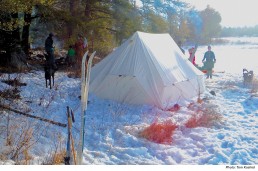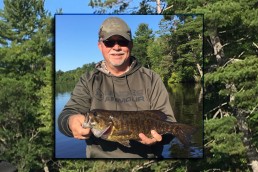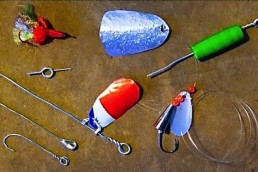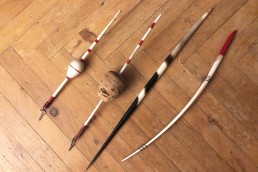Cold Weather Camping Tips
SHARE THIS POST
With proper preparations and only slight modifications of summer/three-season gear Tom Watson says the average weekend camper can even enjoy the colder months outdoors.
Whether you’re overnighting in a spike camp while backcountry hunting, or simply enjoying a late fall/early winter camping weekend, a few cold weather skills and tips can keep you comfortable and warm throughout the harsher environment of a wintry outdoor experience.
Cold weather camping usually means we might have to modify certain gear to perform adequately in colder weather. We may have to modify the type of campsite we are used to picking, and we might have to modify what we wear and what we eat.
Let’s look at several winter scenarios and be reminded of ways to stay comfortable and make the camp more enjoyable:
Are you enjoying this post?
You can be among the first to get the latest info on where to go, what to use and how to use it!
Campsite
- Choose a tent/campsite on slightly raised ground so heavy, colder air doesn’t collect in low spots—especially important when selecting where to pitch your tent.
- Evergreens may provide the only windbreaks, so determine prevailing winter winds and try to find protection from direct force of those cold winds.
- Face tents towards the east to capture warming rays of the morning sun.
Clothing
- Wear non-cotton underlayers (wool, synthetics) to wick away perspiration.
- Pack extra changes of clothing—all layers—and double up on wool socks.
- Choose clothing/boots with insulated liners (wool, fleece, etc.) that can be removed and dried as needed.
- Choose outer shells that are waterproof and that can be ventilated.
Tent/shelter
- Use a premium quality design and materials for winter/four-season use.
- Use a proper-fitting and ventilating tent fly.
- Limit introducing moisture inside your tent (steam from cooking in vestibule, tracking in snow on clothing, poor interior circulation, etc.).
- Use ground cloth inside tent that is slightly larger than the floor area so the edges extend several inches up walls of tent.
- Packing snow along outer walls of tent provides some additional insulation and protection from the wind.
Sleeping system
- Choose at least a three-season sleeping bag and use a wool/fleece liner to add about 10 degrees to its temperature rating.
- Use an “air” mattress on floor for cushioning and a closed cell pad on top of mattress for insulation qualities next to bottom of sleeping bag.
- Have separate underlayers for sleeping; don’t sleep in day clothing.
- Put hot water in bottles or use warmed rocks in socks to warm up foot area of sleeping bag.
- Dark liners dry faster in the sun; remove and dry each day.
- Keep head outside bag; exhaling into bag introduces moisture inside.
Camp kitchen
- Plan “one-pot meals” for simplicity, using boiling water for several tasks at same time (cook noodles/rice in water used to heat up frozen-pouched entrees).
- Bowls keep food warmer longer than plates. Also, wooden utensils draw less heat away from food than do metal forks, spoons.
- Consider insulating jackets (called “Cozies”) around pots, containers to retain heat.
- Burn long-lasting, ember-producing woods (ash, maple, hickory, birch) over softer woods (basswood, conifers, etc.).
- Maintain a big pot of hot water on the edge of your campfire for use all the while in camp.
- A Frisbee makes a great kitchen tool: rimmed plate/bowl, cutting board/windbreak for gas stoves, etc.
Around camp
- Use insulating qualities of snow (air spaces between ice crystals) for storing items you don’t want to freeze in the open air (stow in a cooler, bury in snow).
- Water freezes from top down, so invert water bottles when stowed around camp so if they start to freeze, top/nozzle remains liquid.
- Wrap a few layers of duct tape around metal containers/fuel bottles to reduce/eliminate direct contact and sting of frozen metal on fingertips.
- Zip-ties can be used to repair snowshoe webbing, other field connection fixes.
- Consider a saw over an axe for cutting larger firewood; hatchets good for splitting.
Remember the old adage: “There’s no such thing as bad weather—just bad clothing!” When it comes to cold weather camping, there’s also only bad preparation in general that might keep you from enjoying a wintry outdoor campout.
Discover new ways to enjoy the outdoors year ‘round. Find more suggestions in every issue of MidWest Outdoors, available by subscribing on our website.
MWO
SHARE THIS POST
Did you enjoy this post?
You can be among the first to get the latest info on where to go, what to use and how to use it!
Tom Watson
Tom Watson is a former team member of Kodiak Island Search & Rescue, kayak tour operator, and author of “How to Think Like a Survivor: A Guide for Wilderness Emergencies;” “Best Tent Camping—Minnesota;” “60 Hikes Within 60 Miles Minneapolis and St. Paul” and “Best Minnesota Camper Cabins.” (All available on Amazon.) He’s a freelance writer and presenter on self-reliance and other outdoor topics. tomoutdoors.com.



